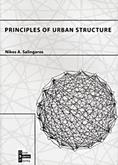urban growth mobility urbanization history giornata di studi inu competition sustainability safety & security open position ifau2018 welfare call for papers maps spatial planning commerce sprawl rural areas architecture historic centers social exclusion/integration cities fragile territories digitalization inu study day governance
Principles of urban structures
Nikos A. Salingaros
This book explains how cities actually work. Written in plain English, it will serve as a guide and inspiration for planners to re-humanize our cities using the latest technologies and recent understanding from science and mathematics.
The dogma of mainstream urbanism cannot cope with the changes in technology, culture and science of the last decades. The heritage we are left with is an overly asphalted and sterile concrete environment. Therefore this book addresses the needs of professional urbanist, students and teachers, who wish to understand how and why cities are successfull or not, depending on their form, conmponents, and substructures. Most of the needs are related to the urgent search for new instruments of urban and planning design, to which this book contributes conceptually by showing how to connect the fractal city on multiple levels. There is an increasing awarness that a city needs to be understood as a complex interacting system. Different types of urban systems overlap to build up urban complexity in a living city. This raises the need for using concepts to the city, shows how to operationalize them, and hopefully marks the beginnings of an urban science.
CONTENTS
• Prologue by Paul Drewe
• Introduction
• Theory of Urban Web
• Urban Space and its Information Field
• A Universal Rule for the Distribution of Sizes
• Complexity and Urban Coherence
• Remarks on a City's Composition
• Connecting the Fractal City
• The Information Architecture of Cities
• The Structures of Pattern Languages
• Pattern Language and Interactive Design
• Design Methods, Emergence, and Collective Intelligence




Planum
The Journal of Urbanism
ISSN 1723-0993
owned by
Istituto Nazionale di Urbanistica
published by
Planum Association
ISSN 1723-0993 | Registered at Court of Rome 4/12/2001, num. 514/2001
Web site realized by ChannelWeb & Planum Association | Powered by BEdita 3

